Bayt Al Suhaymi in Cairo
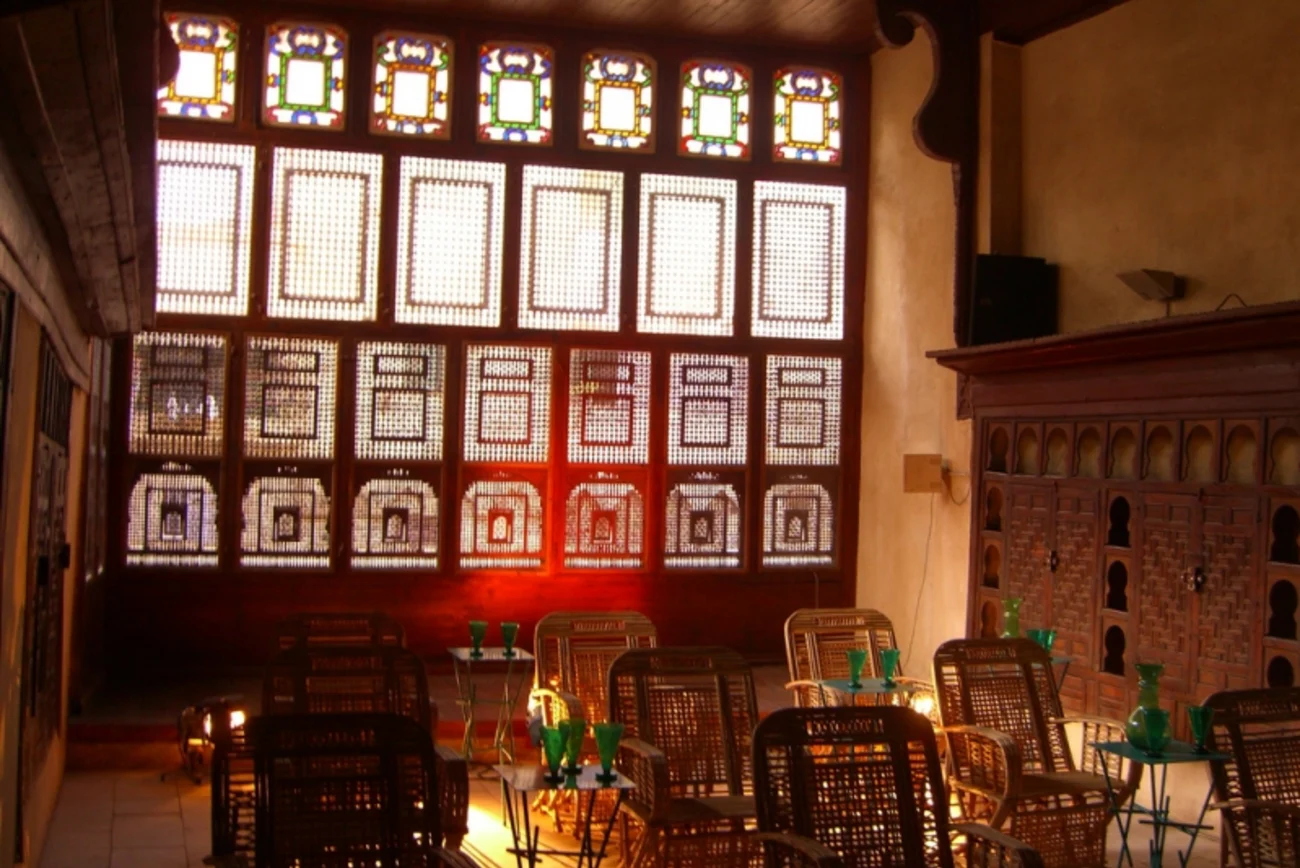
Bayt Al Suhaymi in Cairo stands as a magnificent time capsule amid the bustling streets of modern Egypt. Nestled in the heart of Old Cairo, this architectural masterpiece offers visitors a rare glimpse into the opulent lifestyle of 17th-century Egyptian merchants. While most tourists head to the pyramids or the Egyptian Museum, this hidden gem remains uncrowded, preserving its authentic charm and tranquility.
Beyond its ornate wooden screens and intricate stonework, Bayt Al Suhaymi tells the fascinating story of evolving family life across generations. First built in 1648 and later expanded in 1796, the house showcases ingenious architectural solutions to Egypt’s climate challenges. From natural ventilation systems to cool courtyards, its design demonstrates remarkable engineering that predates modern cooling technology by centuries.
A Walk Through Time: Reaching Bayt Al Suhaymi
The journey to Bayt Al Suhaymi begins at the northern gateway of medieval Cairo, leading travelers through centuries of Islamic history before arriving at this hidden gem tucked in a narrow alleyway.
Starting at Bab El-Futuh
Bab El-Futuh, the “Gate of Conquest,” is one of the remaining gateways of Cairo’s ancient city wall. Built in 1087, it reflects the brilliance of medieval Islamic architecture with its rounded towers and intricate stone decorations. The gate once protected the city and today serves as a stunning introduction to the historic heart of Cairo.
The Journey Through Al-Mu'izz Street
From Bab El-Futuh, visitors continue along Al-Mu’izz Street, one of the oldest streets in Cairo, dating back to the Fatimid era. This bustling thoroughfare is lined with mosques, madrasas, and palaces that narrate a millennium of Islamic art and history. The street’s lively markets and artisans still echo the spirit of medieval Cairo, making it a living museum of culture and architecture.
Finding Al Darb Al-Asfar Alley
Hidden off Al-Mu’izz Street lies a narrow alley known as Al Darb Al-Asfar, or “The Yellow Lane.” Walking through it feels like stepping back in time, as the noise of the main street fades away and calmness takes over. At the end of this alley stands the entrance to Bayt Al Suhaymi—a doorway to one of Cairo’s best-preserved Ottoman-era homes.
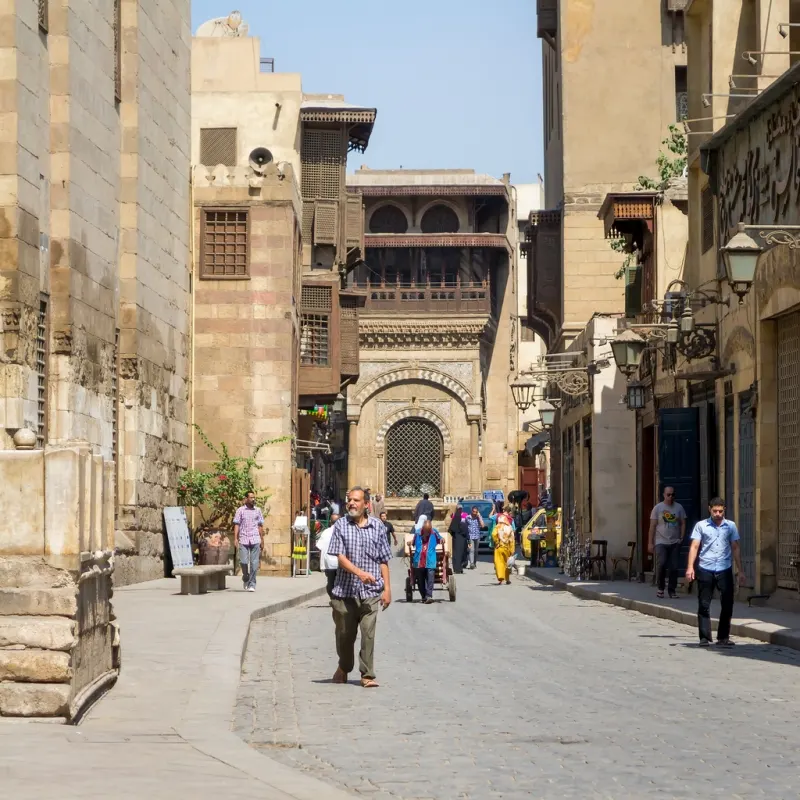
The Origins and Evolution of the House
Bayt Al Suhaymi holds centuries of stories within its walls. It represents the evolution of Ottoman domestic architecture and reflects the changing social fabric of Cairo over hundreds of years.
Built in 1648 by Abdel Wahab Al-Tablawy
The house was originally constructed in 1648 by Sheikh Abdel Wahab Al-Tablawy in the Gamaliya neighborhood, a prestigious district near Al-Mu’izz Street. The design followed Ottoman architectural traditions, dividing the house into two main sections: the Salamlik (men’s area) and the Haramlik (women’s quarters).
Expansion by Sheikh Ahmed Al-Suhaymi in 1796
In 1796, Haj Ismail Shalaby expanded the house, connecting new buildings to the original structure. Later, in 1813, Sheikh Ahmed Al-Suhaymi purchased the residence and made significant additions, merging several neighboring houses into one large complex. His family owned the property for over a century, giving it the name that endures today.
Restoration After the 1992 Earthquake
After centuries of wear and a major earthquake in 1992, Bayt Al Suhaymi suffered significant damage. A large-scale restoration project began in the mid-1990s, preserving its wooden ceilings, marble floors, and beautiful mashrabiya windows. By 2000, the house had been fully restored to its former splendor.
Transition into a Museum
In 1931, the Al-Suhaymi family sold the house to the Committee for the Preservation of Arab Antiquities. Following restoration, it was converted into a museum and cultural center under the Egyptian Ministry of Culture. Today, Bayt Al Suhaymi stands as a symbol of Cairo’s living heritage, open to visitors from around the world.
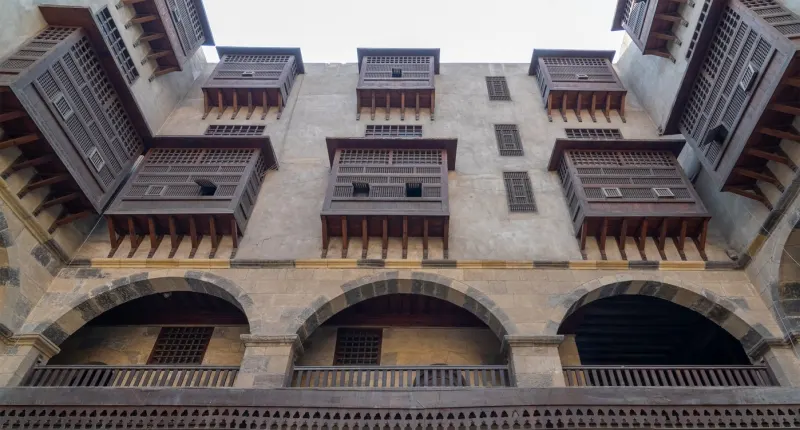
Architectural Secrets Hidden in Plain Sight
Bayt Al Suhaymi is an architectural marvel that demonstrates how Egyptians adapted to their environment long before modern air conditioning or urban design principles existed.
The Majaz: A Bent Entrance with Purpose
The entrance, called the Majaz, is intentionally bent to block direct views into the house, ensuring privacy. This clever design reflects Islamic values of modesty and separates the bustling street from the tranquil home interior.
The Courtyard: Heart of the House
The central courtyard is the house’s cooling core. Surrounded by rooms on all sides, it regulates temperature naturally, allowing hot air to rise and cool air to circulate. It also serves as a peaceful family gathering space with greenery and a small fountain.
Mashrabiya: Privacy Meets Function
The mashrabiya, or wooden lattice screens, are among the house’s most iconic features. They allow air to circulate freely while blocking sunlight and preserving privacy. Women could watch street life without being seen, a perfect blend of practicality and cultural tradition.
The Takhtabush: Morning Gathering Space
Located near the courtyard, the takhtabush served as a semi-open area for morning business discussions and meetings. It stayed shaded throughout the day, keeping the space cool even during Cairo’s hot summers.
The Qa’a and Maq’ad: Spaces for Comfort and Leisure
The qa’a, or main reception hall, featured a fountain and dome for natural cooling. Meanwhile, the maq’ad, a covered balcony on the second floor, offered a breezy retreat in the evenings, ideal for family relaxation.
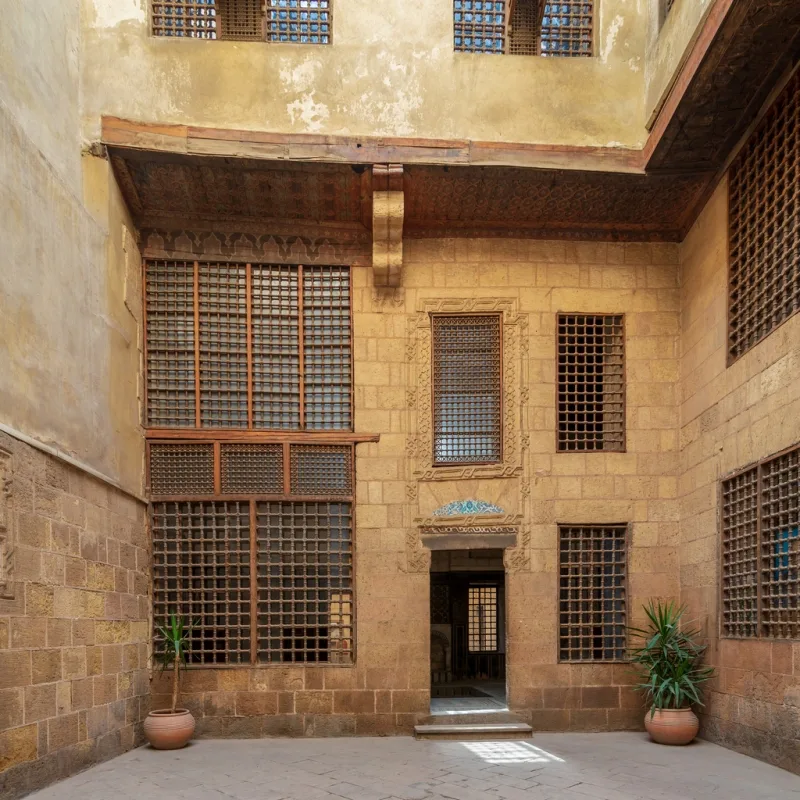
Customize Your Dream Vacation!
Get in touch with our local experts for an unforgettable journey.
Plan Your Trip
Private vs Public: Social Design of the Home
Bayt Al Suhaymi’s architecture was designed to balance privacy, hospitality, and gender norms of Ottoman society.
Salamlik and Haramlik: Dividing Public and Private Life
The Salamlik on the ground floor was dedicated to men and guests, featuring the main reception halls and social areas. The Haramlik upstairs was reserved for women and children, ensuring family privacy while still allowing women to observe life below through mashrabiya screens.
Gendered Spaces and Cultural Values
This spatial organization reflected cultural values of modesty and hierarchy. The design allowed men and women to share the same household while maintaining separate, private environments. Each room and passageway was designed to respect social boundaries and family structure.
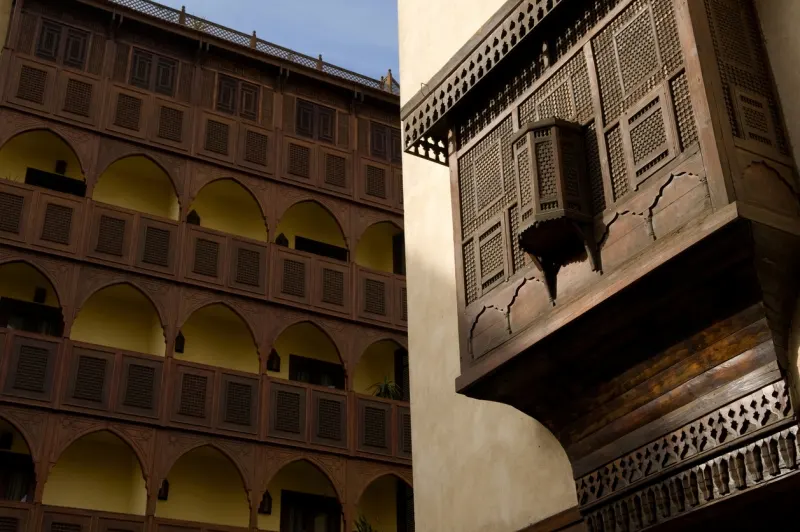
Lesser-Known Corners and Additions
The Second Courtyard and Dome
A second courtyard offers more open space and architectural diversity, showing how the home expanded through time as families grew and merged.
The Old Well and Flour Mill
Bayt Al Suhaymi still contains a functioning flour mill and an old well, providing insight into how households managed daily life and resources in the pre-industrial era.
Bayt El-Kharazty: The Attached House
The residence connects to another structure known as Bayt El-Kharazty, built in the 19th century. Together, they form one of the most complete examples of traditional urban domestic architecture in Cairo.
























